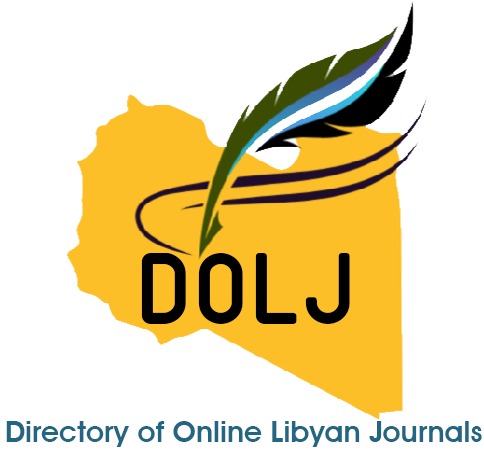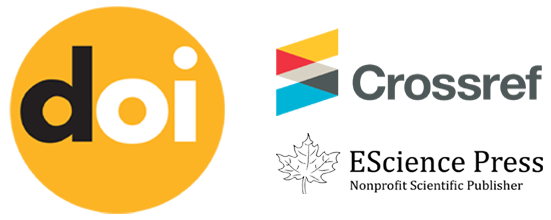Assessment of Calcium, Phosphorous Parathyroid Hormone in End Stage Renal Disease in Ibn Sina Teaching Hospital, Sirt
Abstract
Dialysis is essential for patients with end-stage renal disease (ESRD), a potentially fatal illness. Nev-ertheless, Patients continue encountering significant metabolic issues, such as calcium and phosphate imbalances, even with dialysis. These disorders raise the risk of cardiovascular disease, bone fragility, and death. Examples of these disorders include hypocalcemia, hyperphosphatemia, and secondary hyperparathyroidism. Although many patients are aware of these problems, less focus has been placed on aspects that may be changed, like dietary choices, the use of supplements, and the way comorbid conditions like hypertension and diabetes mellitus (DM) exacerbate these imbalances. This study in-vestigates the prevalence and factors contributing to calcium-phosphate imbalances in ESRD patients on dialysis. It examines how demographic, clinical, and lifestyle factors influence these metabolic dis-turbances, aiming to inform more individualized care. This cross-sectional study was conducted at Ibn Sina Teaching Hospital, Sirt, Libya from November 2023 to June 2024. A total of 99 ESRD patients undergoing dialysis. The measures obtained were Serum calcium, phosphate, and parathyroid hormone (PTH) levels. The study also collected data on6 age, gender, DM and hypertension, supplement use, and dairy consumption. Correlation analyses were performed to explore the relationships between these variables and mineral disturbances. The study found that 78.8% of patients had low calcium levels, and 70.7% had elevated phosphate levels despite dialysis. 57.6% of patients exhibited elevated PTH, indi-cating secondary hyperparathyroidism. DM was present in 39.4% of patients, and 80.8% of patients had hypertension. Notably, 56.6% of patients used supplements, and 53.5% consumed dairy products, but hypocalcemia persisted in the majority. The findings emphasize the difficulty of maintaining calcium and phosphate imbalances in ESRD patients receiving dialysis. These results highlight the necessity of pa-tient-specific, customized approaches to regulating mineral metabolism, particularly in individuals with co-occurring diseases such as diabetes mellitus and hypertension. Reducing problems and raising ESRD patients' quality of life requires addressing these imbalances.
يعد غسيل الكلى ضروريًا للمرضى الذين يعانون من مرض الكلى في مرحلته النهائية، وهو مرض مميت محتمل. ومع ذلك، يستمر المرضى في مواجهة مشاكل أيضية كبيرة، مثل اختلال توازن الكالسيوم والفوسفات، حتى مع غسيل الكلى. تزيد هذه الاضطرابات من خطر الإصابة بأمراض القلب والأوعية الدموية وهشاشة العظام والوفاة. تشمل أمثلة هذه الاضطرابات نقص كالسيوم الدم وفرط فوسفات الدم وفرط نشاط الغدة جار الدرقية الثانوي. على الرغم من أن العديد من المرضى يدركون هذه المشاكل، إلا أنه تم التركيز بشكل أقل على الجوانب التي يمكن تغييرها، مثل الخيارات الغذائية واستخدام المكملات الغذائية والطريقة التي تؤدي بها الحالات المرضية المصاحبة مثل ارتفاع ضغط الدم ومرض السكري إلى تفاقم هذه الاختلالات. تبحث هذه الدراسة في انتشار العوامل التي تساهم في اختلال توازن الكالسيوم والفوسفات لدى مرضى الفشل الكلوي في مرحلته النهائية الذين يخضعون لغسيل الكلى. كما تبحث في كيفية تأثير العوامل الديموغرافية والسريرية ونمط الحياة على هذه الاضطرابات الأيضية، بهدف إعلام الرعاية الأكثر فردية. أجريت هذه الدراسة المقطعية في مستشفى ابن سينا التعليمي، سرت، ليبيا من نوفمبر 2023 إلى يونيو 2024. ما مجموعه 99 مريضًا مصابًا بمرض الكلى في مراحله النهائية يخضعون لغسيل الكلى. كانت القياسات التي تم الحصول عليها هي مستويات الكالسيوم والفوسفات وهرمون الغدة جار الدرقية (PTH) في المصل. جمعت الدراسة أيضًا بيانات عن العمر والجنس ومرض السكري وارتفاع ضغط الدم واستخدام المكملات الغذائية واستهلاك منتجات الألبان. تم إجراء تحليلات الارتباط لاستكشاف العلاقات بين هذه المتغيرات واضطرابات المعادن. وجدت الدراسة أن 78.8٪ من المرضى لديهم مستويات منخفضة من الكالسيوم، و 70.7٪ لديهم مستويات مرتفعة من الفوسفات على الرغم من غسيل الكلى. أظهر 57.6٪ من المرضى ارتفاعًا في هرمون الغدة جار الدرقية، مما يشير إلى فرط نشاط الغدة جار الدرقية الثانوي. كان مرض السكري موجودًا في 39.4٪ من المرضى، و 80.8٪ من المرضى يعانون من ارتفاع ضغط الدم. والجدير بالذكر أن 56.6٪ من المرضى استخدموا المكملات الغذائية، و 53.5٪ تناولوا منتجات الألبان، لكن نقص كالسيوم الدم استمر في الغالبية. وتؤكد النتائج على صعوبة الحفاظ على اختلال التوازن في الكالسيوم والفوسفات لدى مرضى الفشل الكلوي في مراحله النهائية الذين يخضعون للغسيل الكلوي. وتسلط هذه النتائج الضوء على ضرورة اتباع نهج خاص بكل مريض لتنظيم عملية التمثيل الغذائي للمعادن، وخاصة لدى الأفراد الذين يعانون من أمراض مصاحبة مثل داء السكري وارتفاع ضغط الدم. ويتطلب الحد من المشاكل وتحسين نوعية حياة مرضى الفشل الكلوي في مراحله النهائية معالجة هذه الاختلالات.











